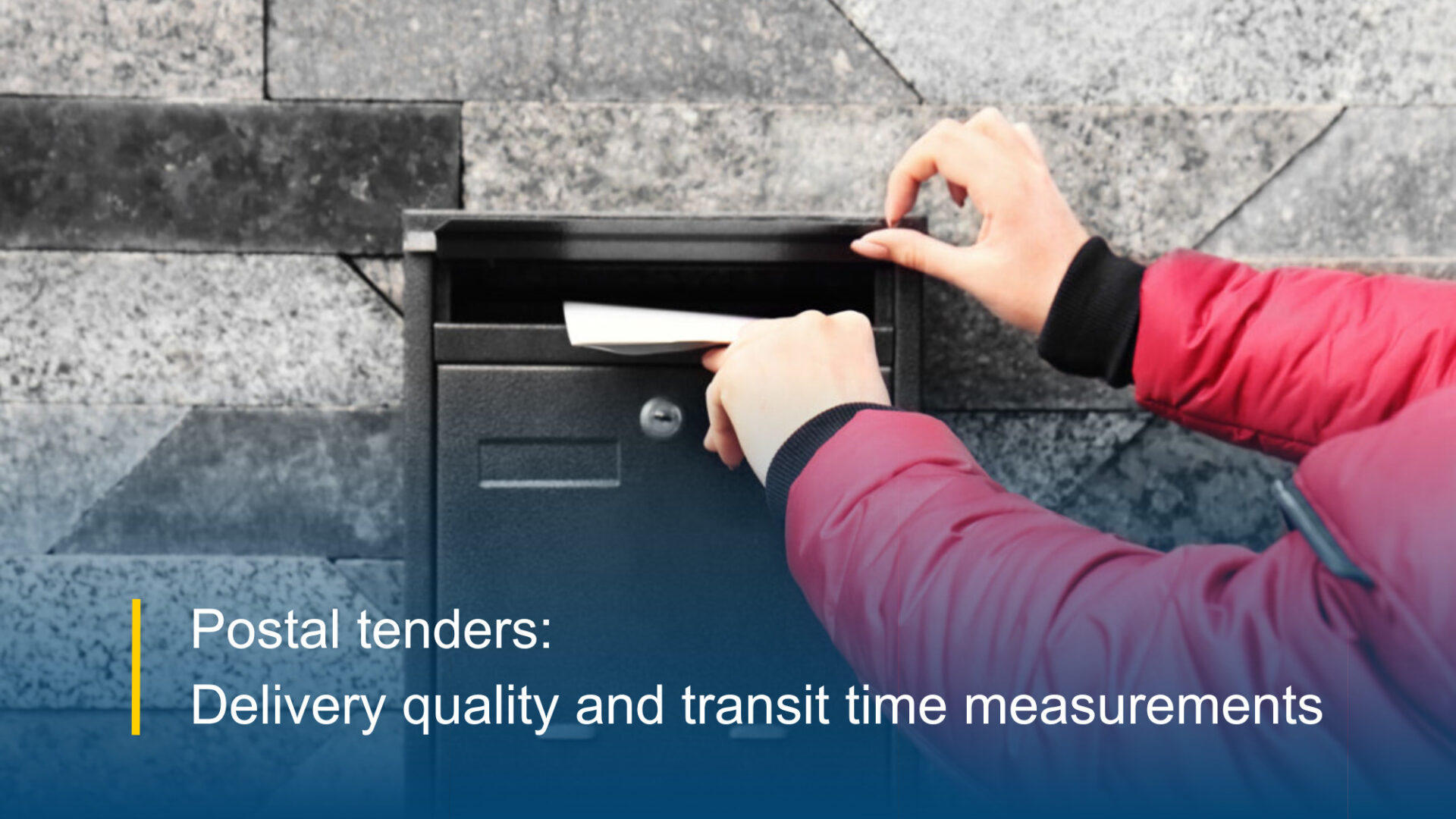How do you demonstrate good delivery quality in postal tenders?
The endeavours of public clients and awarding authorities to demand quality in delivery are immense and are directly related to image, commitment, deadlines and also costs. In recent years, numerous postal tenders have been published with the requirement to measure transit times. However, the sense and nonsense of “proof of delivery quality” are sometimes very close together.
Proof of fulfilment quotas for a service is no coincidence. They are part of every agreement between customer and service provider. This is the only way to ensure quality and the only way the service provider can justify its claim to remuneration. This also applies to postal services in particular. Where would we end up if a letter took 5 days to reach its recipient, but the content of the consignment required a response within 3 days? Our entire government system is bound by deadlines. These must be adhered to by both the recipient and the sender. As the sender’s area of responsibility also extends to the delivery of his communication, he needs a reliable partner. The purpose of postal tenders is therefore to identify suitable co-operations.
Legal requirements for your delivery quality
In Germany, as in many other countries, the law precisely defines the standards that a universal service provider must be measured by. Admittedly, the Postal law of Germany is written in favour of the market dominator. However, it regulates that the universal service is provided by all providers simultaneously. This means that every provider of postal services (including Deutsche Post AG in Germany, which was the former monopolist and remains the market leader) will at least have to be measured against the minimum quotas.
The actual basis for a demand for quality measurement procedures in postal tenders should therefore be comprehensible. However, it is precisely this definition of the law that causes the biggest misunderstandings in the control of fulfilment quotas. In order to control these legal requirements, EU-wide standards and regulations were drawn up and declared as binding. Often quoted and available as a compelling argument in every tender: The norms EN 13850 and EN 14534.
Not all transit time measurements are the same
In addition to the proof of certified quotas for service quality for bidders, larger awarding authorities initiate their own transit time measurement procedures or transit time checks and include fulfilment quotas in the contract. These latter measurement procedures differ fundamentally from the procedures that are designed to permanently monitor delivery quality. These procedures are only intended to use a random sample to check whether the provider is complying with its specifications and agreements.
There are two different approaches, but these are often mixed up by contracting authorities and cause confusion. Almost all current tender notices, procedural instructions or even specified measurement procedures have one thing in common: they either miss the point or are simply impossible for bidders to fulfil.
Everything is running on standards – does it?
In order to fulfil the control of contractual agreements from the tenders, a transit time measurement system in accordance with EN 13850 or EN 14534 is quickly demanded. In order to give the bidder a real headache, this demand is then garnished with the parameters for a specified measurement procedure, which can drive SMEs to the brink of financial ruin, or the statement “…representative of the delivery quality of the letter service…” is reduced to absurdity. One bidder demands a weekly measurement, the next is satisfied with one day and yet another makes no specifications at all. The lack of understanding causes frustration and additional work on all sides. The justified demand for quality indicators for services is drowned in a sea of reprimands, objections or is rejected altogether.
It would go beyond the scope of this article to discuss the content and procedures of existing DIN standards. Examples of nonsense are demands for quality indicators from a daily measurement. What is this figure supposed to tell us other than how well the provider worked on this one day? Unfortunately, the delivery year has a few more days than just one. As the awarding authority, you either decide that the bidder must provide quotas during the procedure or that it must regularly provide evidence of these after the contract has been awarded, or you announce your own measurements in the contract, which may also result in a penalty agreement.
Some advice before the postal tender:
- Do you need quality indicators? For example, for awarding the contract or for later monitoring of the contractual agreement. Ask the bidder about existing transit time measurement procedures: Request the parameters of the measurement and the corresponding certificate from a neutral organisation that monitors the measurement itself. A continuous transit time measurement system is exactly what you need here!
- For bidders who do not have an existing quality measurement procedure: Specify an accuracy of the results and a duration over which the proof is to be provided. Remember, Rome wasn’t built in a day either. The longer the measurement was carried out prior to an award, the more meaningful the key figure about the delivery quality of the measurement period (one month measurement = the delivery quality of the measured month). According to the standard, you only receive a statement about the delivery quality of the service provider in general after a 12-month measurement.
- What should be measured? Are you interested in the delivery service provider’s delivery rate as a whole, i.e. across its entire delivery area, or do you just want to know how well your mail is delivered?
Would you like to find out more about continuous transit time measurements and their design? As an independent institute, Spectos supports companies in setting up and carrying out end-to-end transit time measurements of postal services. The structure of our measurement system is tailored to your individual objectives for checking delivery quality. We take into account the applicable European standards as well as cultural and demographic characteristics in the respective target country.
Find out more about certified transit time measurements and our solutions for postal service providers!
Contact our experts Our Solutions
Case studies, industry news, events and much more – you can find it all on our LinkedIn channel!


